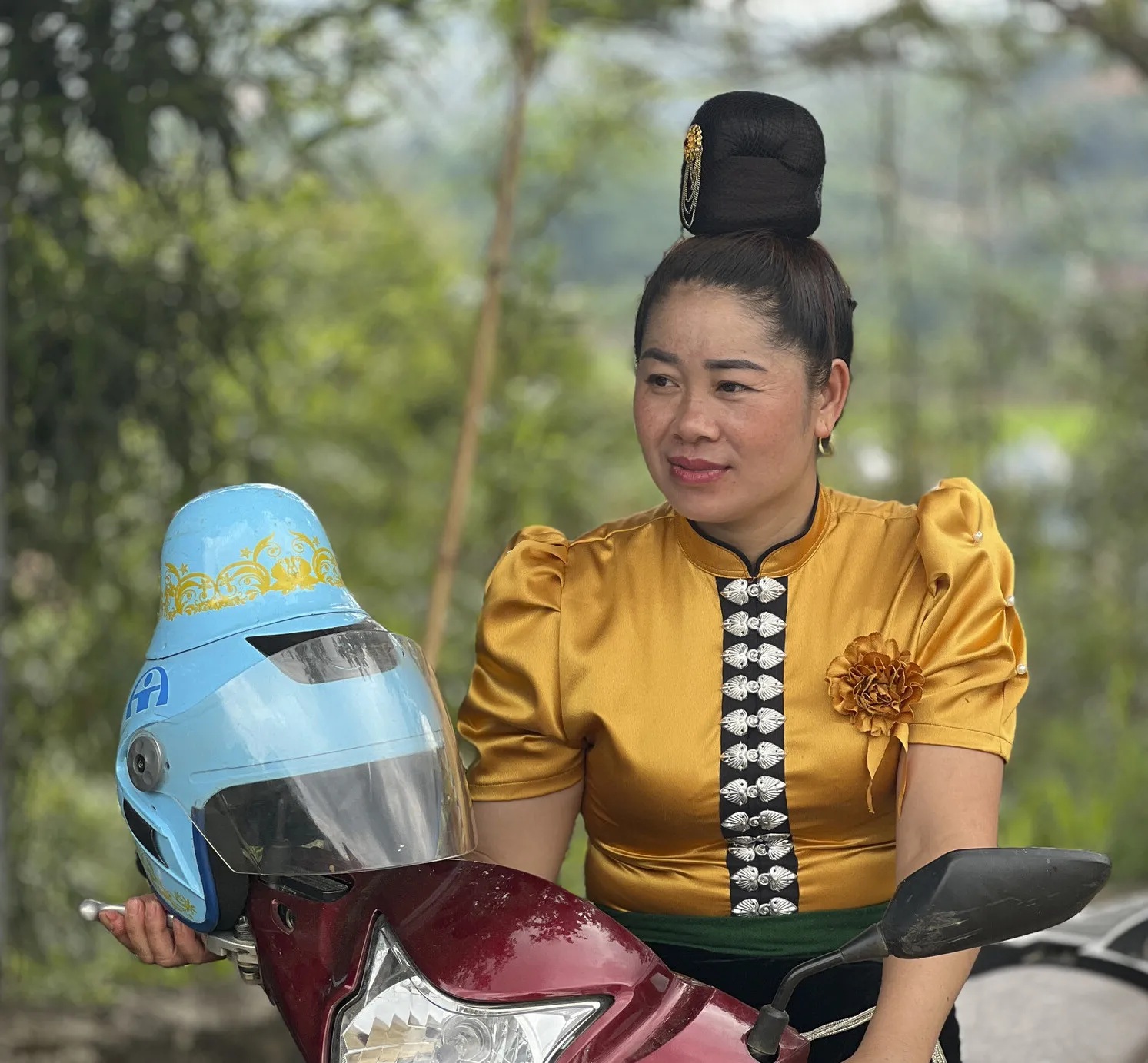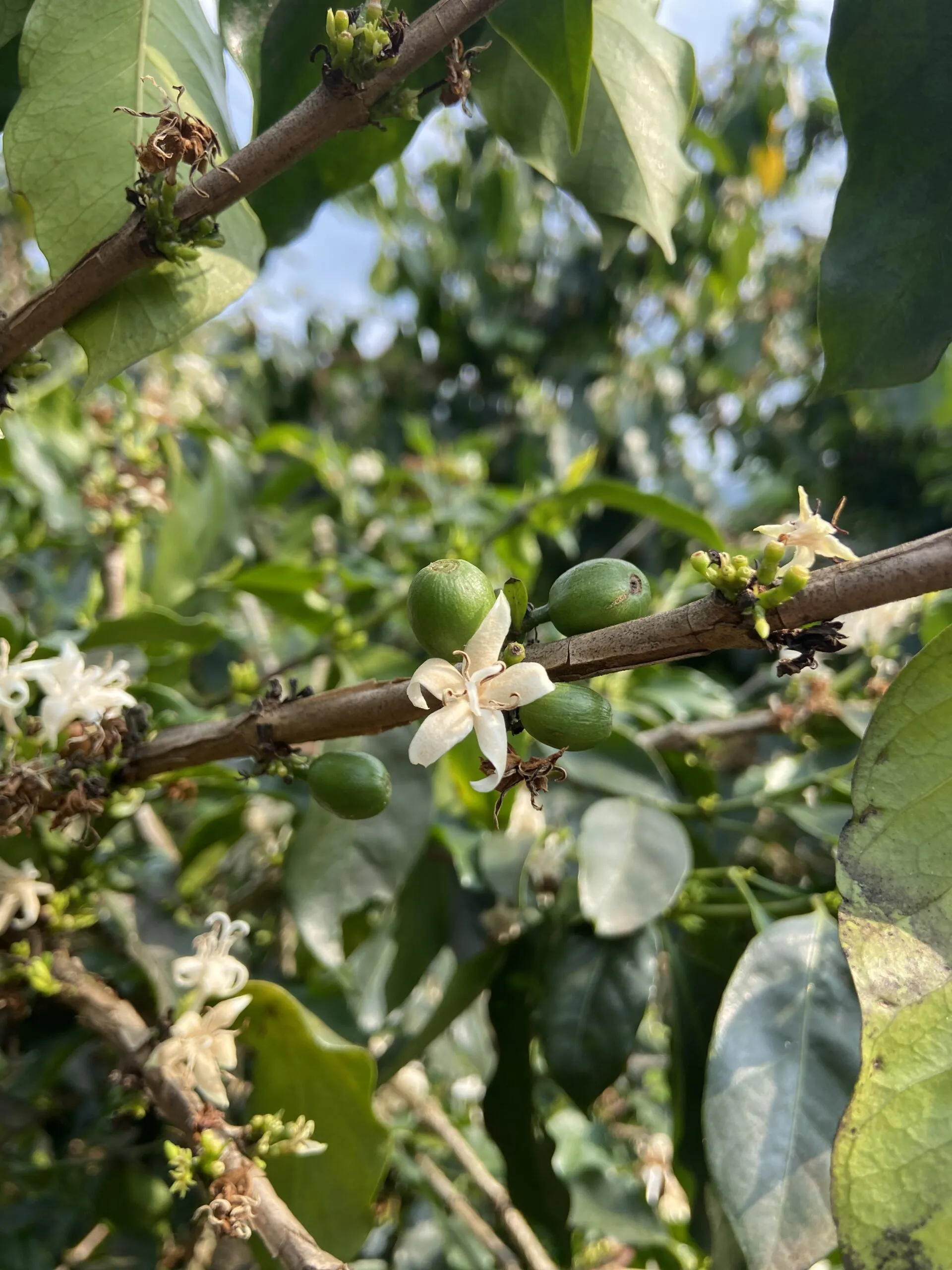Once this Village Savings and Loan Association (VSLA) established itself, Mon and the others invited like-minded entrepreneurial women from around the Central Highlands region to talk about their own experiences and to offer advice.
The women in the VSLA wanted something they could invest in, something unique to their region, and something that would help them stand-out from the other hand-crafts and regional foods other small businesses offered.
They didn’t think of coffee, Mon says, because, “back then, it was only men in charge of the coffee production.”
But some visiting women entrepreneurs from Lam Dong helped encourage them, and so they took a chance.
“In 2019,” Mon says. “We set up a small group to process coffee,” and, in a few moths, the Ara Tay Coffee Cooperative was officially established.
The perfect cup
“While I was home studying,” Binh says. “I also started farming coffee for my parents, working in the fields every day. But at first, I didn’t join the cooperative, I just attended a training course from CARE.”
As part of the Women’s Economic Justice initiative that had helped Mon with her VSLA, CARE had also been supporting experts to train the community in specialty coffee production.
Mon says that at the time, there were many women in similar positions to Binh, young women graduates just starting to branch out and to see what new things might be possible for their generation. But, both Binh and Mon admit, it was hard.
Ara Tay was just figuring out how to turn the local soil and traditions into something they themselves could share with the outside world, and not everyone agreed they should be branching out from simply growing coffee into owning the whole process.
“In the past,” Mon says “I only knew how to plant, take care of and sell fresh fruit to traders outside. I didn’t know how to produce the coffee beans to the final product.”
“When CARE entered and help with establishing a cooperative, we were trained from care to collection, preliminary processing to final products.”
The Ara Tay women were learning, but they still didn’t have was someone who had the one essential skill that was hardest to learn, one that the men seemed to have a monopoly on.
Taste.
While most of the trainings focused on the technical aspects of coffee production, CARE had helped Ara Tay bring in a representative from an Italian-run international coffee importer called InterKom S.P.A. He was there to help teach the group the finer points of professional coffee tasting, and this happened to be the one training Binh decided to attend.
The “test” InterKom S.P.A had the students take involved describing the coffee in detail, slowly listing all the different flavors and textures they could taste. Binh dutifully did what she was asked to do, and then she waited with the rest of the class for the results.
She was a young woman, a recent graduate, and her experience with specialized coffee was mostly just harvesting it from family’s fields. No one would have thought she would stand out. No one would suspect she had taste.
But after she’d taken that first sip, something happened. And the results showed it.
“I knew that sour taste was characteristic of Arabica coffee, and I realized that it was a pure, original cup of coffee.”
“When people saw the results, they were really surprised,” Binh says. “I was surprised, too!”
It turned out that once Binh got over her initial reaction to that first sip, she had a talent for picking out this coffee’s distinct, layered flavors. She had what all epicureans strive for but very few actually have — she had taste.
“I started to learn by drinking more coffee, feeling the flavors more,” Binh says. “I joined a number of coffee production companies to evaluate the quality of coffee in Son La. Then I joined the Northwest Crop Research Center, joined with Phuc Sinh to evaluate the coffee of each year.”
And with Binh officially in the fold, Ara Tay took off.
Now, three years after that first cup, Binh is the primary coffee taster and quality grader for Ara Tay, and she says, “when I taste a cup of coffee grown, cared for, processed, roasted, and finished by my own hands, I feel it as the historical process of the homeland where we live.”
A new normal in Son La
Some things are still the way they’ve always been in Son La.
On any given day, you can still see Binh on her motorcycle, zooming around the mountains. But instead of going to school or coming from friends’ houses, she’s now riding from the VSLA to the greenhouse to the farm and back home.
There, too, some things are the same, while others are quite different.









